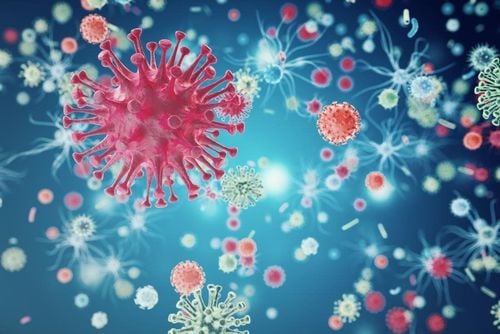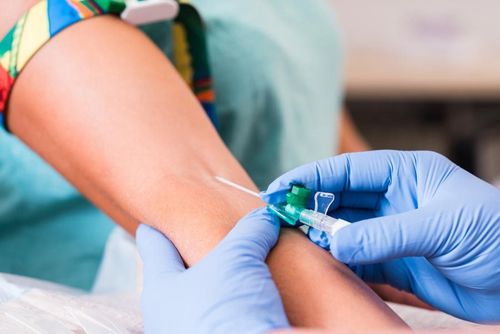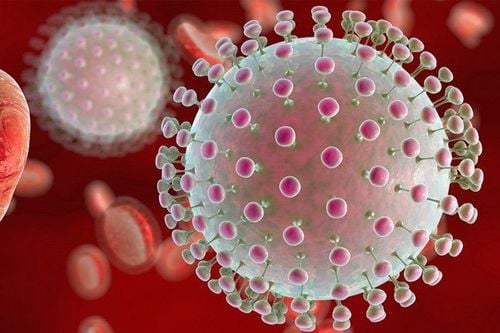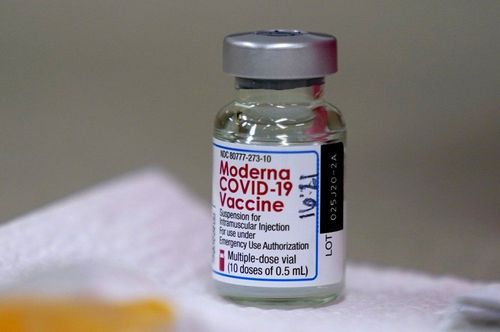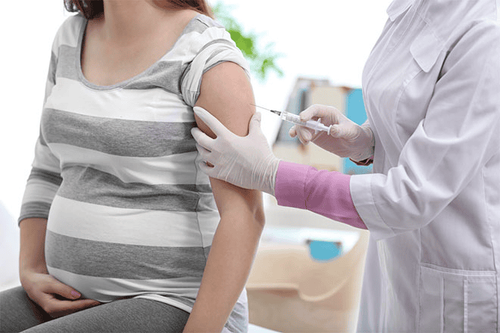This is an automatically translated article.
The article was professionally consulted with MSc Tran Thi Vuong - Doctor of Microbiology - Laboratory Department - Vinmec Hai Phong International General Hospital.TB bacteria can be detected through many different methods, in which PCR is an advanced method to support TB diagnosis, giving highly accurate results as long as the specimen is taken and stored correctly. the right way, the right process.
1. Tuberculosis
Tuberculosis is an infection caused by bacteria called Mycobacterium tuberculosis, most commonly pulmonary tuberculosis. In addition, TB can be found in other organs such as lymph node tuberculosis, intestinal tuberculosis, meningitis, bone tuberculosis, kidney tuberculosis...Route of transmission: TB bacilli usually enter the airways through droplets that infected people TB cough, spitting up sputum into the environment.
Tuberculosis bacilli are relatively resistant to physico-chemical factors, compared with other non-spore-forming bacteria. It has been determined that TB bacteria can live in the environment for up to 6 hours, so for every 1 person who coughs up due to untreated pulmonary TB, an amount of TB bacteria is released into the air that can transmit the disease to 10 people. up to 15 people around. Especially in densely populated places, maybe from 4-5 people or more such as classrooms, families or offices... In moist phlegm, they can live for months, in milk they can can live for weeks. With antibiotics and chemotherapy, TB bacilli are increasingly resistant to Streptomycin, ethambuton, INH, and rifampicin. Drug-resistant tuberculosis is a prominent problem of both Vietnam and the world.
However, once the patient has been treated, the likelihood of transmitting or spreading TB bacteria is reduced. Therefore, timely detection and treatment of TB patients are extremely important.
2. PCR method to diagnose TB bacteria
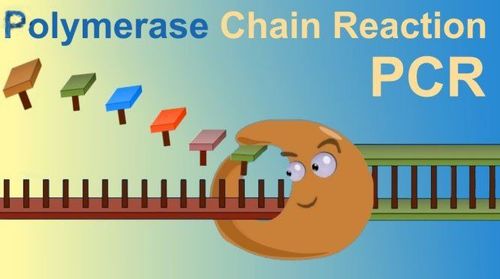
PCR (Polemerase Chain Reaction) assay, also known as molecular biology assay, is a technique to generate large quantities of target DNA in vitro based on thermal cycles. This technique was invented by American scientist Kary Mullis in 1985. PCR technique can be applied in many fields: diagnosis, testing of microbial pathogens, sex determination of embryos. , genetic decoding, creating new varieties with directional mutations, studying the evolution of organisms at the molecular level. PCR is a technique with high sensitivity, fast results (usually within 24 hours), and high accuracy.
PCR for tuberculosis has great value. With the increasing prevalence of tuberculosis and the emergence of drug-resistant strains of TB, rapid diagnostic methods of pulmonary tuberculosis have important public health implications. In addition to the advantages of fast results, TB PCR is also very sensitive compared to classical techniques and TB PCR can be performed with many different types of specimens: sputum, fluids, tissues....
3. Principle of TB PCR test
Specimens will be taken according to the correct technique, including sputum or other body fluids such as pleural fluid, cerebrospinal fluid, peritoneal fluid, synovial fluid, lymph node puncture...Specimen will be sent down Laboratory. Here, the patient sample will be processed (sputum) and total DNA is separated.
DNA after separation will be used as a template (original DNA sample) to participate in the PCR reaction.
A basic PCR reaction includes:
Primer: is a DNA fragment with a length of about 30 nucleotides, with a sequence specific to the sequence of the gene of the tuberculosis bacteria to be cloned. Enzyme: DNA polymerase, the most commonly used is Taq polymerase to prolong the PCR reaction chain Other materials: dNTPs, Mg 2+ salt..., buffer night solution as a medium for the reaction to take place... PCR machine As a thermal circulator, the thermal cycles are alternated, happening quickly and accurately. A PCR reaction has the following stages: denaturation, pairing, and elongation. The denaturation phase separates the DNA from the double strand into 2 single strands. In the pairing stage: the primer will be paired with the DNA in the patient sample. Elongation phase: DNA polymerase enzyme will lengthen the DNA strand. These cycles will be repeated. And if there is TB DNA in the isolated sample of BP, then from a single original DNA billions of copies can be made after 35-40 heat cycles.
The result is negative when the specimen does not contain TB bacteria, the extracted DNA does not contain TB DNA, no DNA copies will be produced after the reaction.
4. When should the PCR test for TB be performed?

5. Advantages - disadvantages of PCR for TB diagnosis
5.1 Advantages High sensitivity and specificity, giving quick results after only 24 hours. Can be performed with many different specimens such as cerebrospinal fluid, pleural fluid, bronchial fluid, sputum, etc. TB bacteria can be detected even at very low concentrations of about 1-3 bacteria. /mL specimen. 5.2 Disadvantages This is a rather complicated technique, high cost and requires very expensive equipment investment. In addition, the reactivity of this technique is very strong, the process is strict, so it needs a high level of professional personnel, few units can deploy. The results need to be compared with X-ray and clinical to give the most accurate advice to the patient. Incorrect sampling may occur in which case a patient takes 2 test samples that give different diagnostic results.6. Method of specimen collection and preservation
In order to have accurate TB PCR results, it is necessary to ensure the principle of the procedure from specimen collection to transportation and storage.How to properly collect samples:
Samples are sputum taken in the morning, after the patient has rinsed his mouth with filtered water, then breathe evenly and deeply about 3 times in the following way: inhale steam Take a deep breath, hold your breath for a few seconds, and then exhale slowly. The patient then takes a deep breath, and coughs vigorously until sputum appears in the throat. The patient gently spits this sputum into a sterile test vial. TB PCR results can be performed on many samples other than sputum, specifically body fluids: fluid from the bronchi or pleura, from the cerebrospinal fluid, from the pericardium, from the joints. .. These patient samples need to be sampled according to the correct techniques and procedures. Specimens should be sent immediately to the laboratory after being tested, in case they cannot be sent immediately, they can be refrigerated for 24 hours. The PCR test for tuberculosis, with its outstanding advantages, is increasingly being used in the diagnosis and testing of diseases in humans as well as in livestock and poultry. Testing for early TB diagnosis will help doctors come up with an appropriate treatment regimen, avoid misuse of drugs for the wrong disease, which is the foundation for creating strains of bacteria that are resistant to drugs in the disease. body.
Vinmec International General Hospital is one of the hospitals that not only ensures professional quality with a team of leading medical doctors, modern equipment and technology, but also stands out for its examination and consultation services. comprehensive and professional medical consultation and treatment; civilized, polite, safe and sterile medical examination and treatment space. Customers when choosing to perform tests here can be completely assured of the accuracy of test results.
Please dial HOTLINE for more information or register for an appointment HERE. Download MyVinmec app to make appointments faster and to manage your bookings easily.





